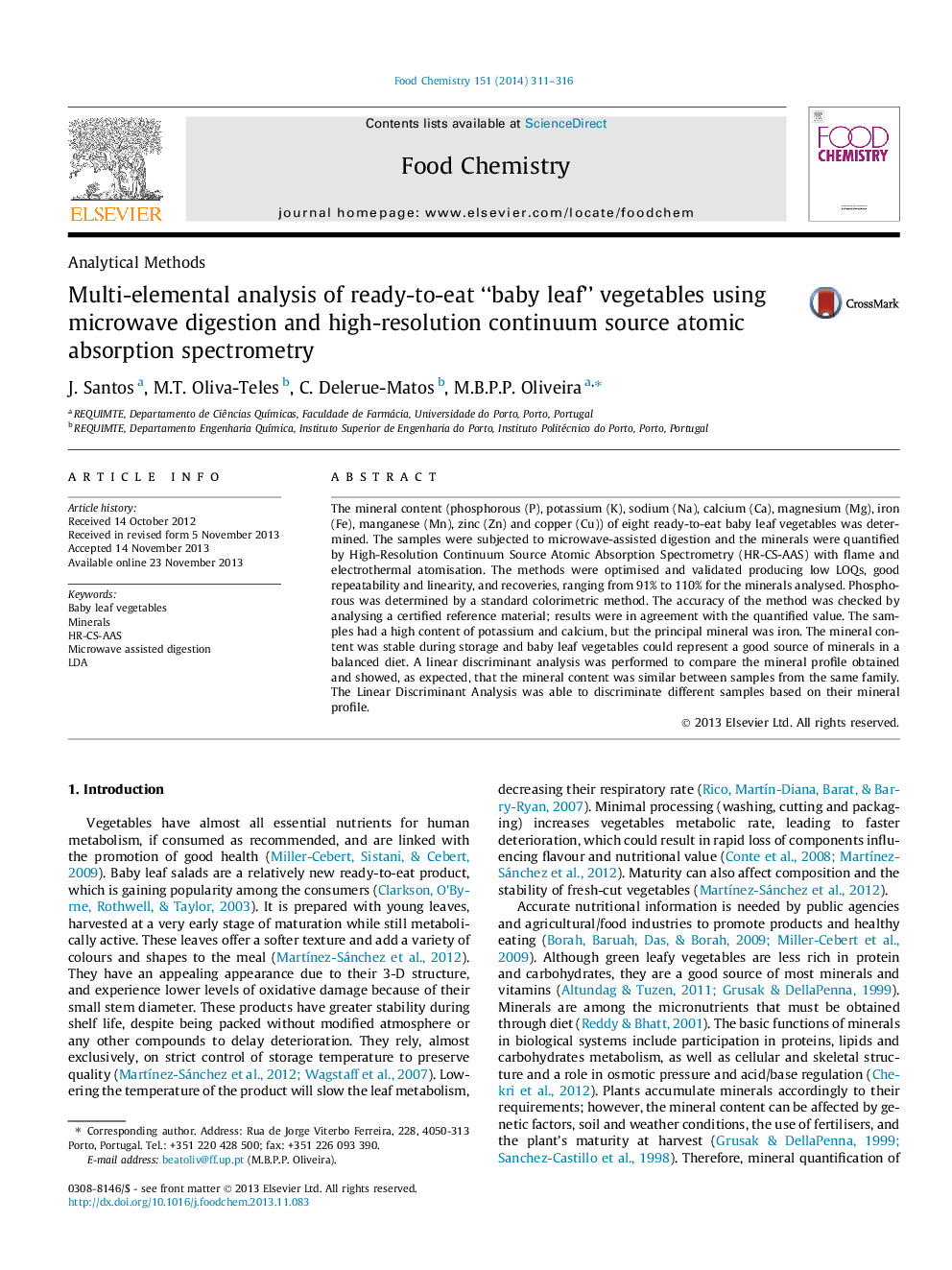| کد مقاله | کد نشریه | سال انتشار | مقاله انگلیسی | نسخه تمام متن |
|---|---|---|---|---|
| 1185267 | 1492140 | 2014 | 6 صفحه PDF | دانلود رایگان |
• A HR-CS-AAS method for mineral analysis in vegetables was developed and validated.
• The mineral content of eight baby leaf was determined showing a similar profile to the mature products.
• The mineral content of the ready to eat vegetables was stable during the shelf life period.
• A LDA was performed to compare the overall mineral composition of the samples.
• Baby leaf vegetables could be a good source of minerals in a balanced diet.
The mineral content (phosphorous (P), potassium (K), sodium (Na), calcium (Ca), magnesium (Mg), iron (Fe), manganese (Mn), zinc (Zn) and copper (Cu)) of eight ready-to-eat baby leaf vegetables was determined. The samples were subjected to microwave-assisted digestion and the minerals were quantified by High-Resolution Continuum Source Atomic Absorption Spectrometry (HR-CS-AAS) with flame and electrothermal atomisation. The methods were optimised and validated producing low LOQs, good repeatability and linearity, and recoveries, ranging from 91% to 110% for the minerals analysed. Phosphorous was determined by a standard colorimetric method. The accuracy of the method was checked by analysing a certified reference material; results were in agreement with the quantified value. The samples had a high content of potassium and calcium, but the principal mineral was iron. The mineral content was stable during storage and baby leaf vegetables could represent a good source of minerals in a balanced diet. A linear discriminant analysis was performed to compare the mineral profile obtained and showed, as expected, that the mineral content was similar between samples from the same family. The Linear Discriminant Analysis was able to discriminate different samples based on their mineral profile.
Journal: Food Chemistry - Volume 151, 15 May 2014, Pages 311–316
